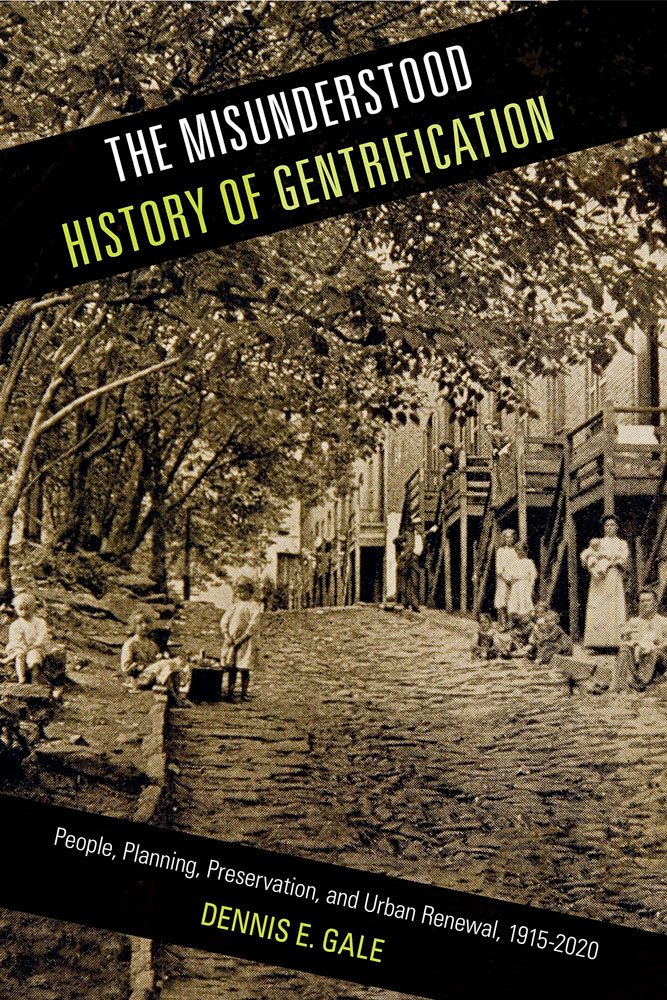 The Misunderstood History of Gentrification The Misunderstood History of Gentrification
People, Planning, Preservation, and Urban Renewal, 1915-2020
Dennis E. Gale
Narrated by Kevin Moriarty
Available from Audible
Book published by Temple University Press
The origins of gentrification date back to World War I—only it was sometimes known as “remodeling” then. Dennis Gale’s insightful book, The Misunderstood History of Gentrification, provides a recontextualization of American gentrification, planning, and policymaking. He argues that gentrification must be understood as an urban phenomenon with historical roots in the very early twentieth century.
Gale uses solid empirical evidence to trace the embryonic revitalization of Georgetown, Greenwich Village, Beacon Hill, and elsewhere back to 1915. He shows how reinvestment and restoration reversed urban decline and revitalized neighborhoods. The Misunderstood History of Gentrification also explains how federal policies such as the Urban Redevelopment Program (later named Urban Renewal), which first emerged in 1949, razed urban slums and created an “urban crisis” that persisted in the 1960s and ‘70s. This situation soon prompted city gentrifiers and historic preservationists to reuse and rehabilitate existing structures.
Within a more expansive historical framework, Gale offers a fresh perspective on and debunks misperceptions about gentrification in America.
REVIEWS:
“Gale offers an intriguing analysis of a previously unrecognized chapter in the history of urban gentrification.... Summing Up: Highly recommended.”
—Choice “The Misunderstood History of Gentrification is a critically important addition to the burgeoning literature on the subject. With his broad scholarly vision, Gale delivers on his promise of providing a prologue to contemporary gentrification studies and, in so doing, challenges us to view public post-WWII urban revitalization efforts anew.”
—The Journal of Urban Affairs “(A) valuable historical perspective on American gentrification, something that, thus far, has been lacking.... This highly readable, politically neutral book represents an important contribution to the neighborhood revitalization literature.”
—The Journal of the American Planning Association TABLE OF CONTENTS:
Introduction
I Embryonic Gentrification: Case Studies and Examples
1. The Georgetown Neighborhood of Washington, D.C., 1915–1945
2. The Greenwich Village Neighborhood of New York City, 1915–1945
3. The Beacon Hill Neighborhood of Boston, 1915–1945
4. Early Embryonic Gentrification: An Atlantic and Gulf Coast Phenomenon
II Urban Redevelopment/Renewal Contends with the Gentrification Paradigm, 1945–1980
5. Federal Policies to Reverse Urban Decline, 1949–1974
6. The Decade of the Neighborhood and the “Discovery” of Gentrification
III Dilemmas in Definition and Dialectics
7. Embryonic Gentrification and Advanced Gentrification, 1980–2018
Conclusion
|

